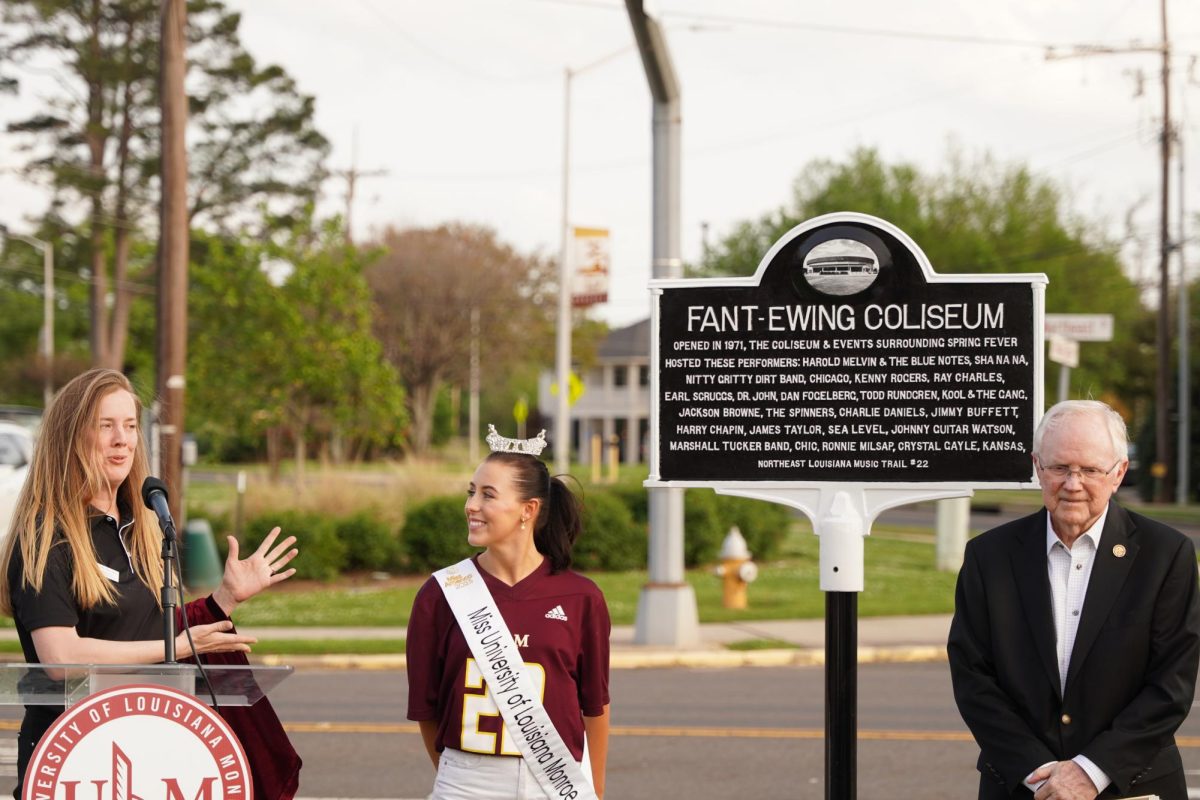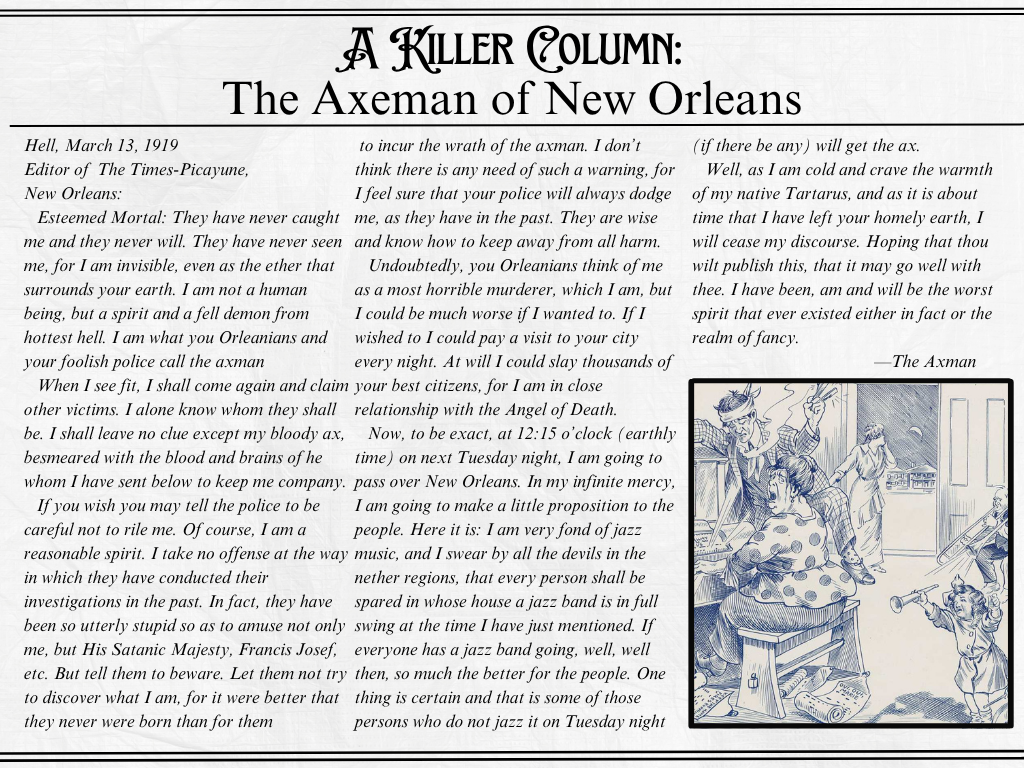The Northeast Louisiana Music Trail honored students, artists and faculty who helped Spring Fever Week flourish with a marker outside of Fant-Ewing Coliseum.
Enoch Doyle Jeter, founder of Enoch’s Irish Pub and Cafe and former art professor, started the NELA Music Trail. He runs a Facebook page for the group, promoting the now 22 markers across Louisiana. The marker outside of Fant-Ewing is the eighth marker in the Monroe/West Monroe area.
“People say there is nothing going on,” Jeter said. “That is baloney. There is something every day.”
The marker features the names of those who worked to make Spring Fever Week worth the time. Some musicians invited the working students to attend concerts in areas such as Jacksonville, Little Rock and Memphis due to their work ethic with the event.
Molly McCullar, Jeter’s daughter and director of ticket sales for the ULM Athletic Department, provided significant help to her father during the beginning stages of the Music Trail. Now, the group is able to further expand on their goals with the Opportunity Fund scholarship received from ULM.
“The opportunity fund is to fund projects just like this,” McCullar said. “Music brings us all together.”
Before the reveal of the marker, Charles H. McDonald discussed the history of CAB and Spring Fever Week, with a few witty comments thrown in. “I’ll present like a swimsuit—brief enough to keep interest and long enough to cover the topic,” McDonald said.
Beginning in 1972, the Union Board, an entertainment section of SGA—now the Campus Activities Board—collaborated with musicians to give students worthwhile events separated from the university’s politics. However, it did not always go smoothly. McDonald said that with over twelve entrances, the event workers often struggled to properly secure the building. Union Board students would have to plan for every possible outcome because at least one of each happened during his three decades running the event.
“That’s what you deal with as an advisor,” McDonald said. “You better plan because something is going to happen. You can’t plan for it all, but you should try.”
The Music Trail aims to “honor the rich musical heritage of northeast Louisiana by recognizing and celebrating the musicians, music, places, stories and people who make up this special area of the world,” according to the Music Trail’s Facebook page. For more information on the Music Trail and its goals, visit the Historical Marker Database at hmdb.org.



